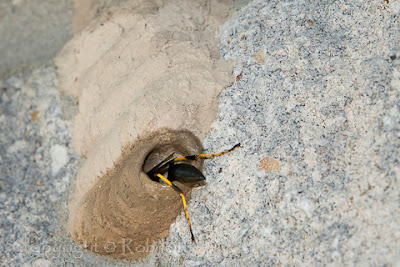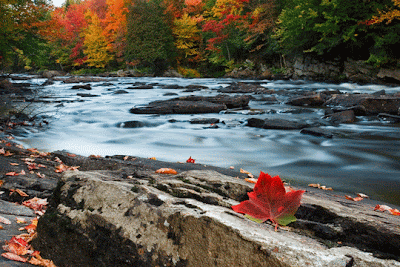I was able to make it to the Oxtongue River again this year, just outside of Algonquin Park. Although I was maybe a week too early for prime autumn colours, there was enough colour around to make me happy. The advantage of being a week early is that I was the only photographer there! I had the whole place to myself. The water was lower this year and I was able to get into the middle of the river and get some great shots. Someone had made Inukshuks on the rocks and I was able to get in close with a wide angle lens.
I know someone who was there 2 weeks after me and he had to fight for a spot along the bank and some of the photographers were quite frustrated with the Inukshuks. Somewhat understandable as they would not be able get out there for a good composition as they would be in everyone else's pictures (and would also risk having rocks thrown at them for being in their pictures!!!).
Since I was able to get out there, I was able to make them the main subject and had them work for me. Here are a couple images. The first one is with a wide angle lens that I borrowed to try out. It was the Sigma 10-22mm/f4 and I fell in love with it. I am quite happy with the result:
I also moved back and took out the 70-200mm and snapped a shot putting the focus on the Inukshuk, and keeping the background blurred. I opened up to f2.8 for this one as I wanted the Inukshuk to stand right out. I also warmed up the image a bit in Lightroom.
I had some nice reds and yellow when I was there. In the first image above, you can see a small maple showing beautiful reds on the right bank. I walked over with the 70-200mm took an image I've been meaning to try for quite awhile. Framing the branches on an angle, I zoomed in and went with a mid-aperture (f11) since the lower branch was closer to me and I wanted both branches to be in focus. I wanted the water to be out of focus in the background and have the leaves pop.
Keeping the 70-200mm on, I zoomed in down river to capture the colours of the trees along the far bank.
And one final image to share....this is a view up river from where I was standing near the Inukshuks. Basically, turned 180 degrees.
All in all, I had a great evening on the Oxtongue. I can't wait to go back again.....
Cheers,
Rob

















































